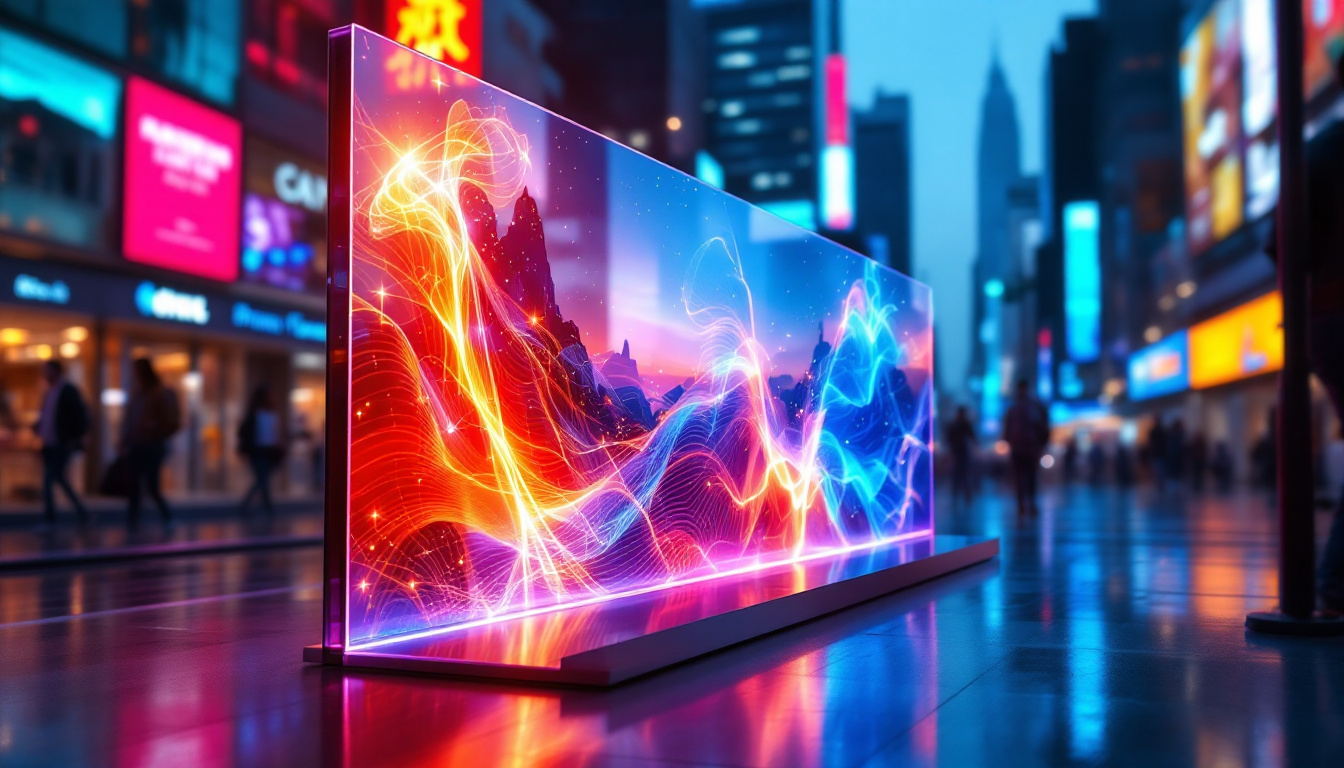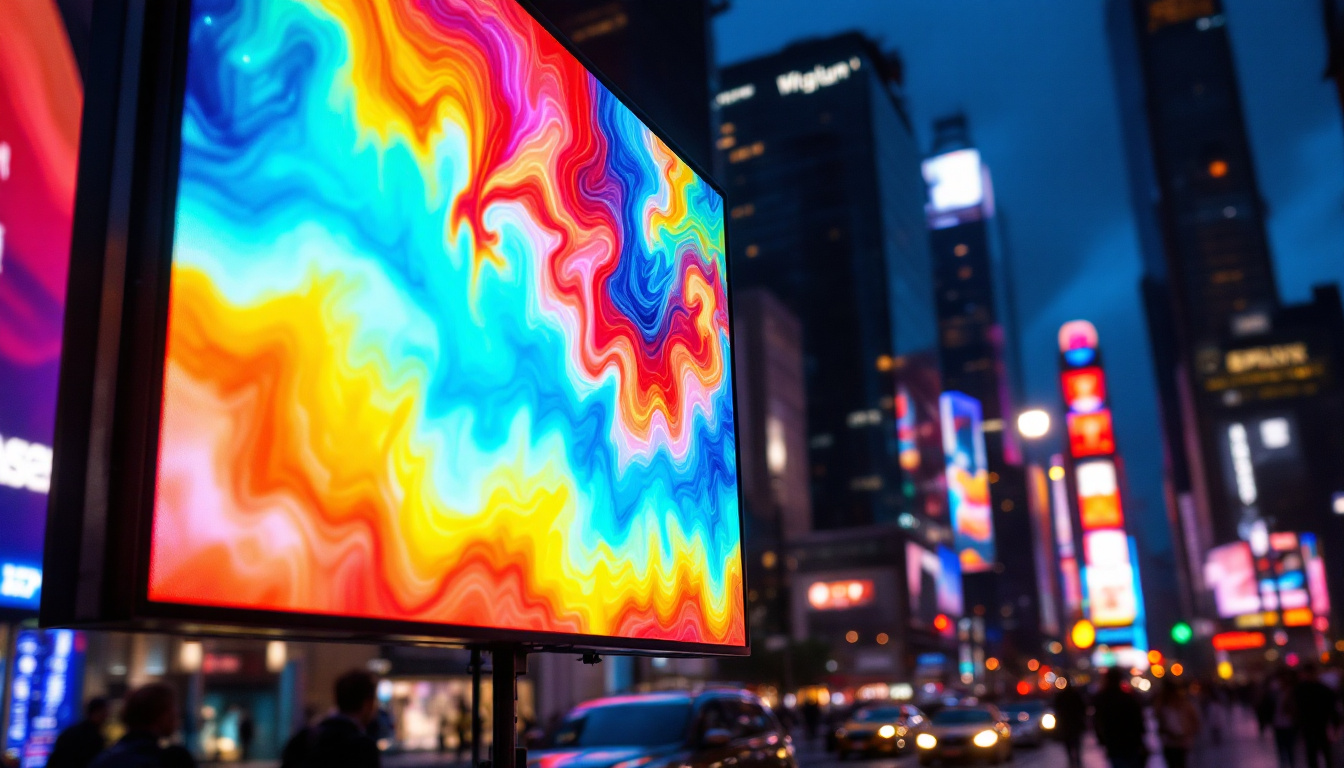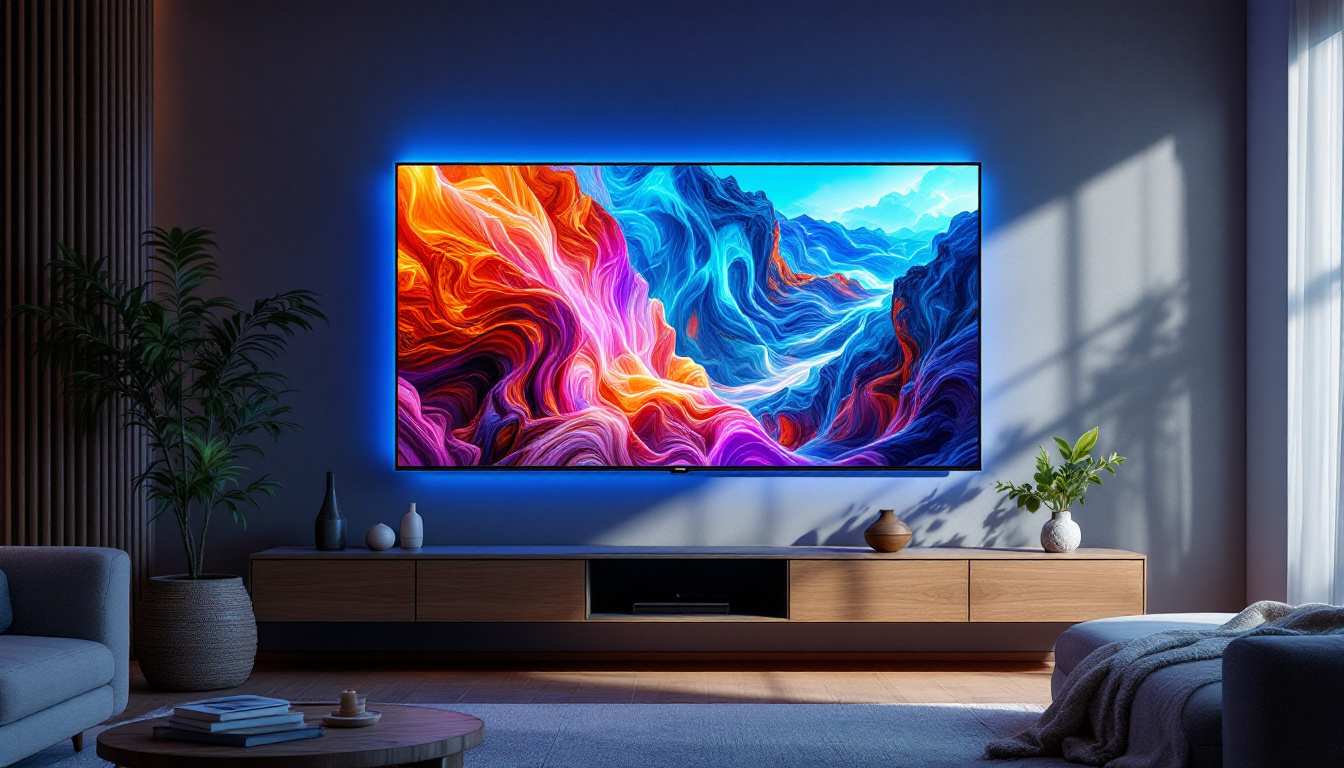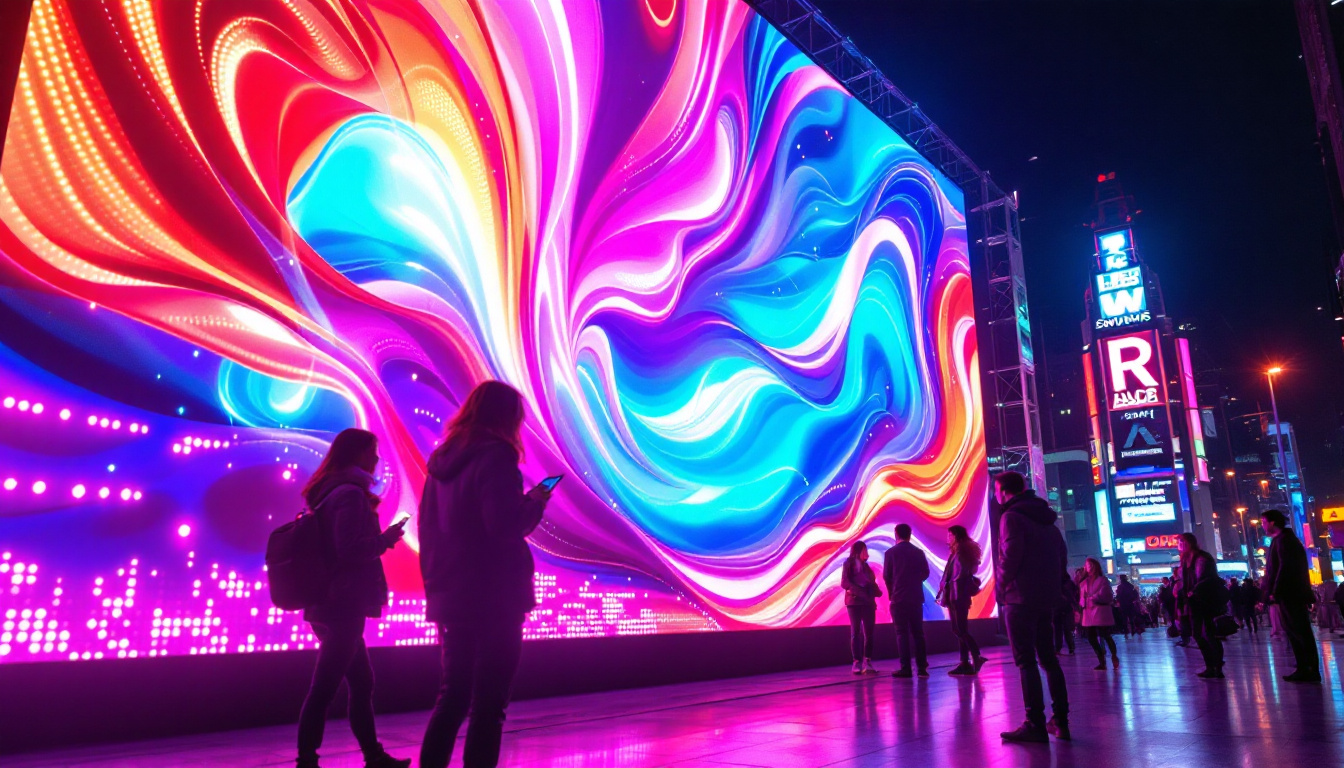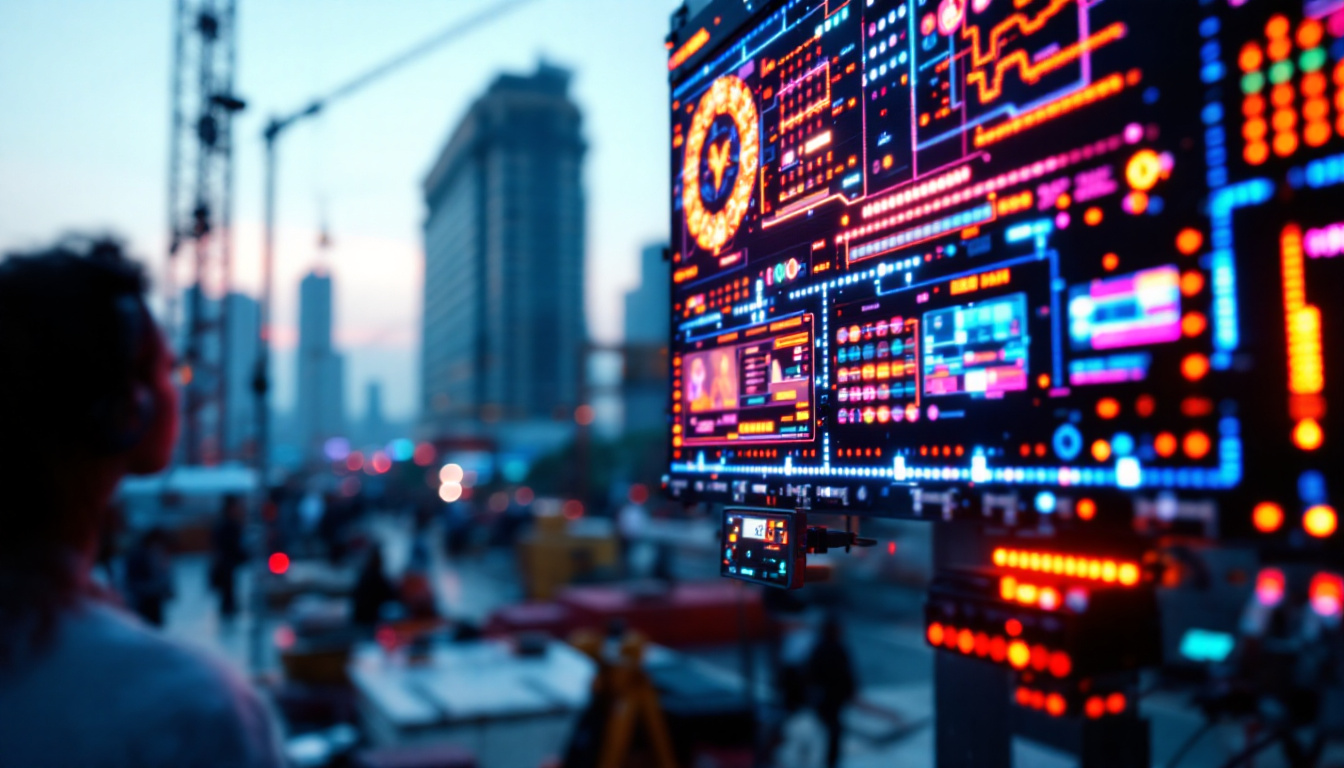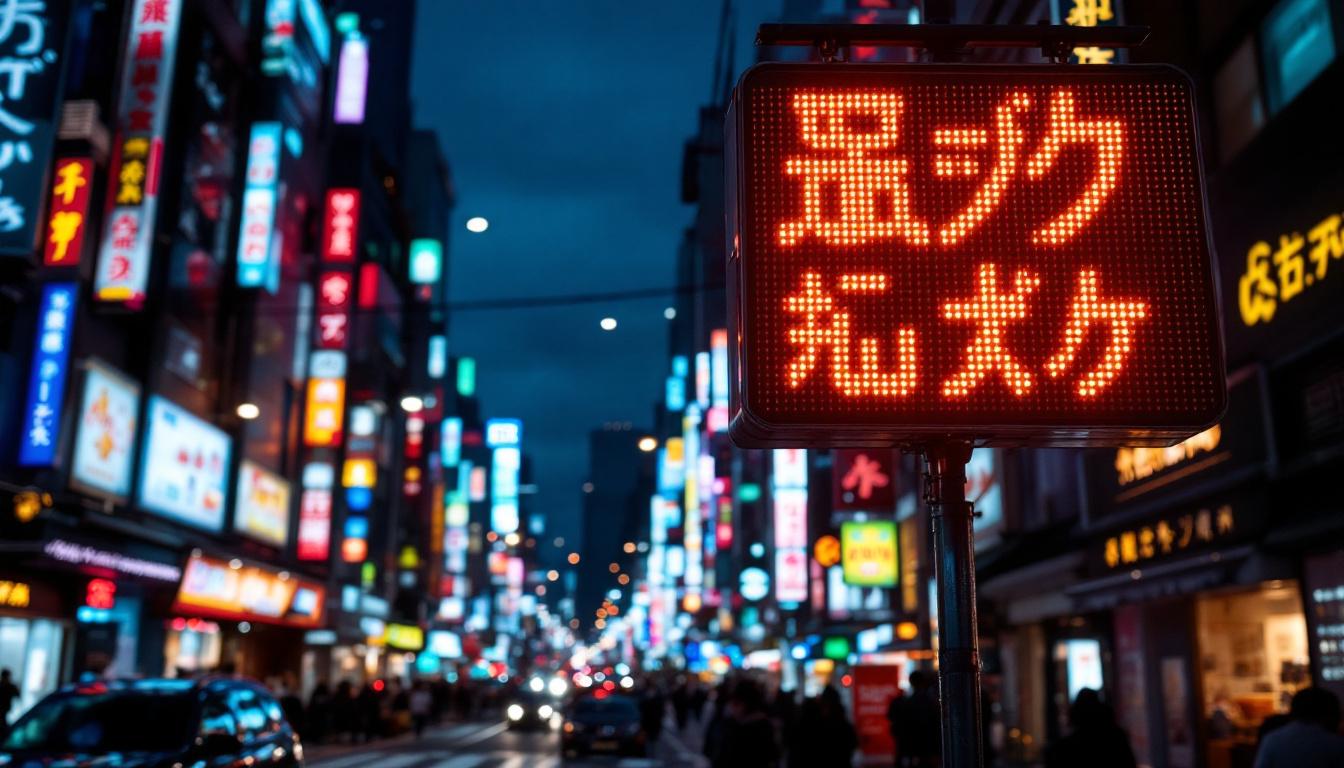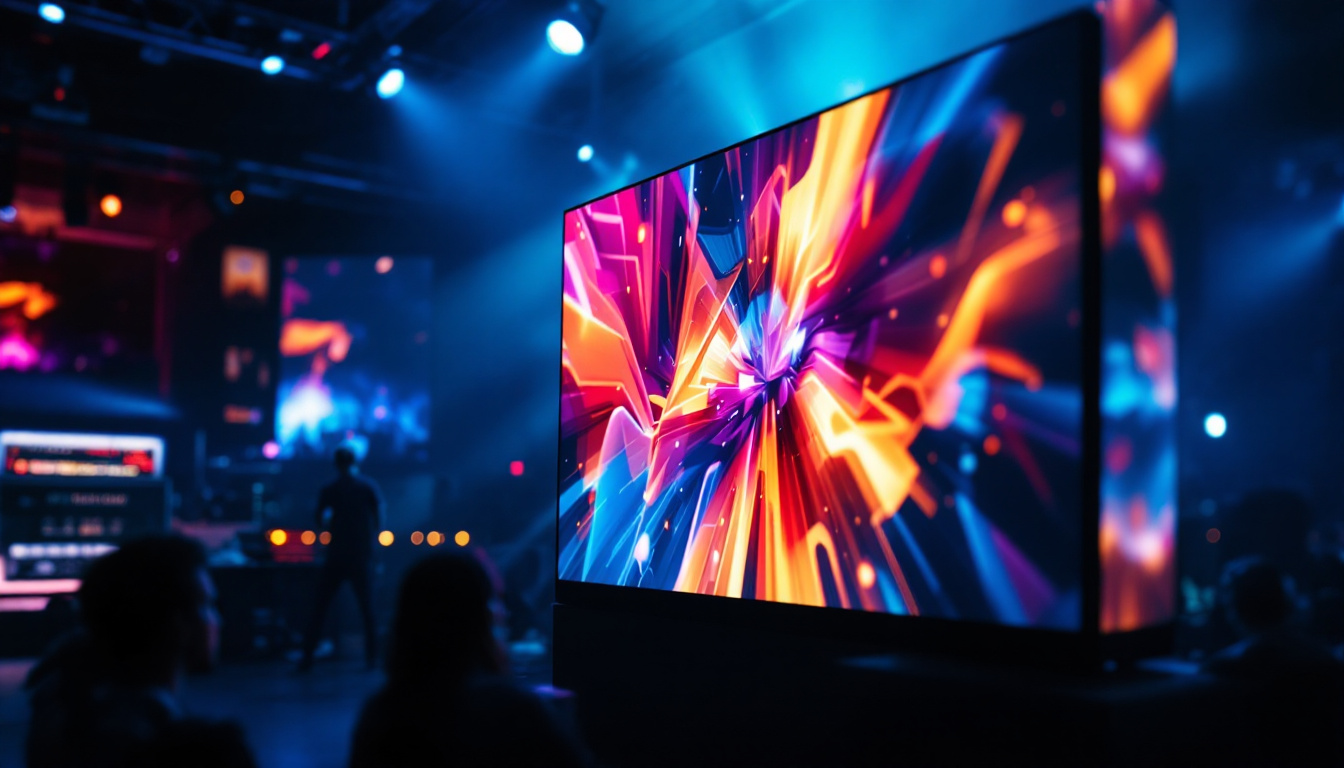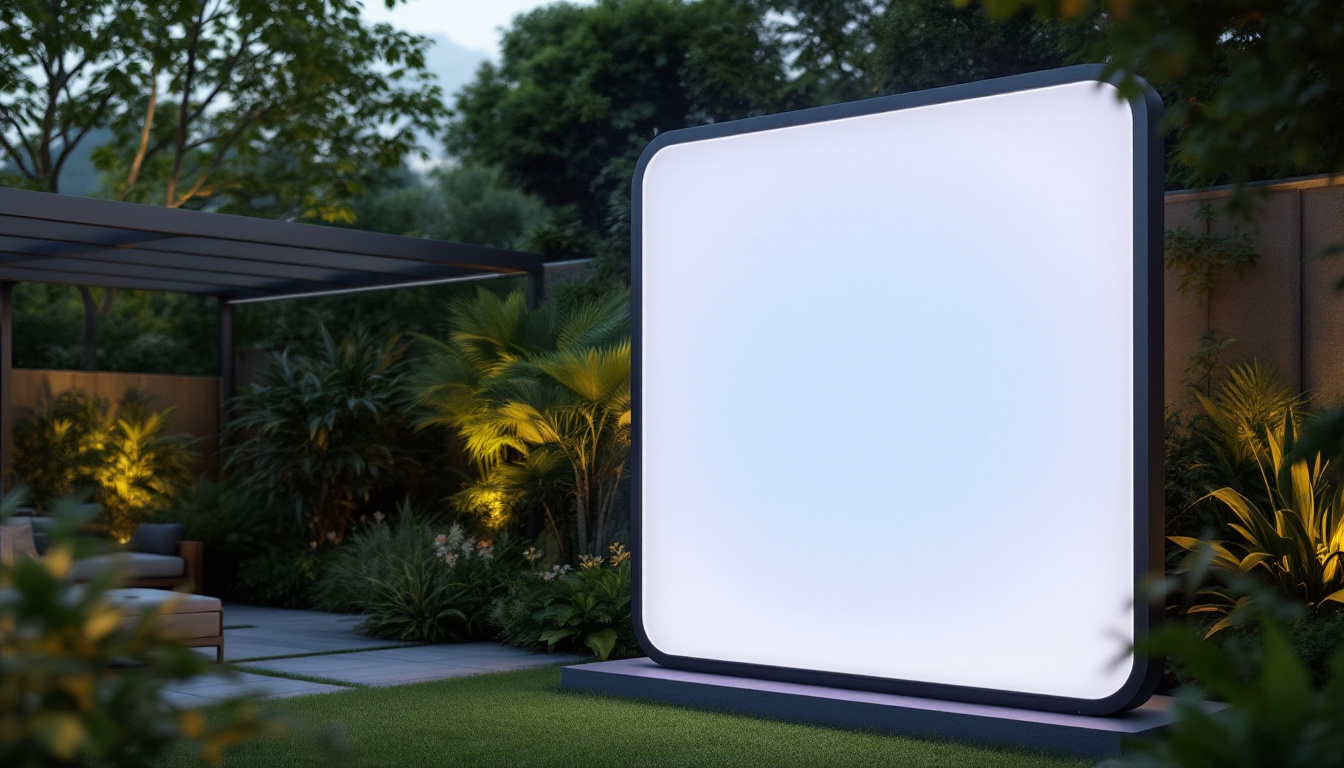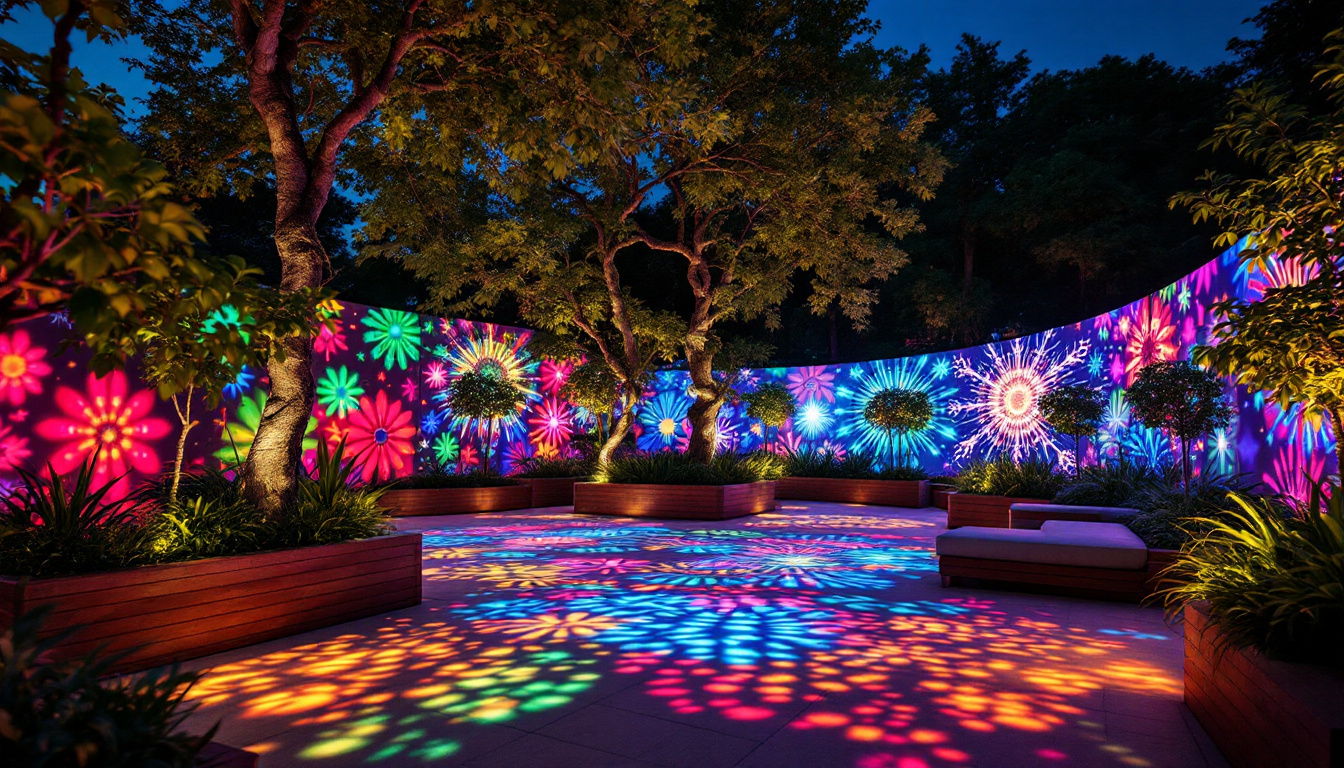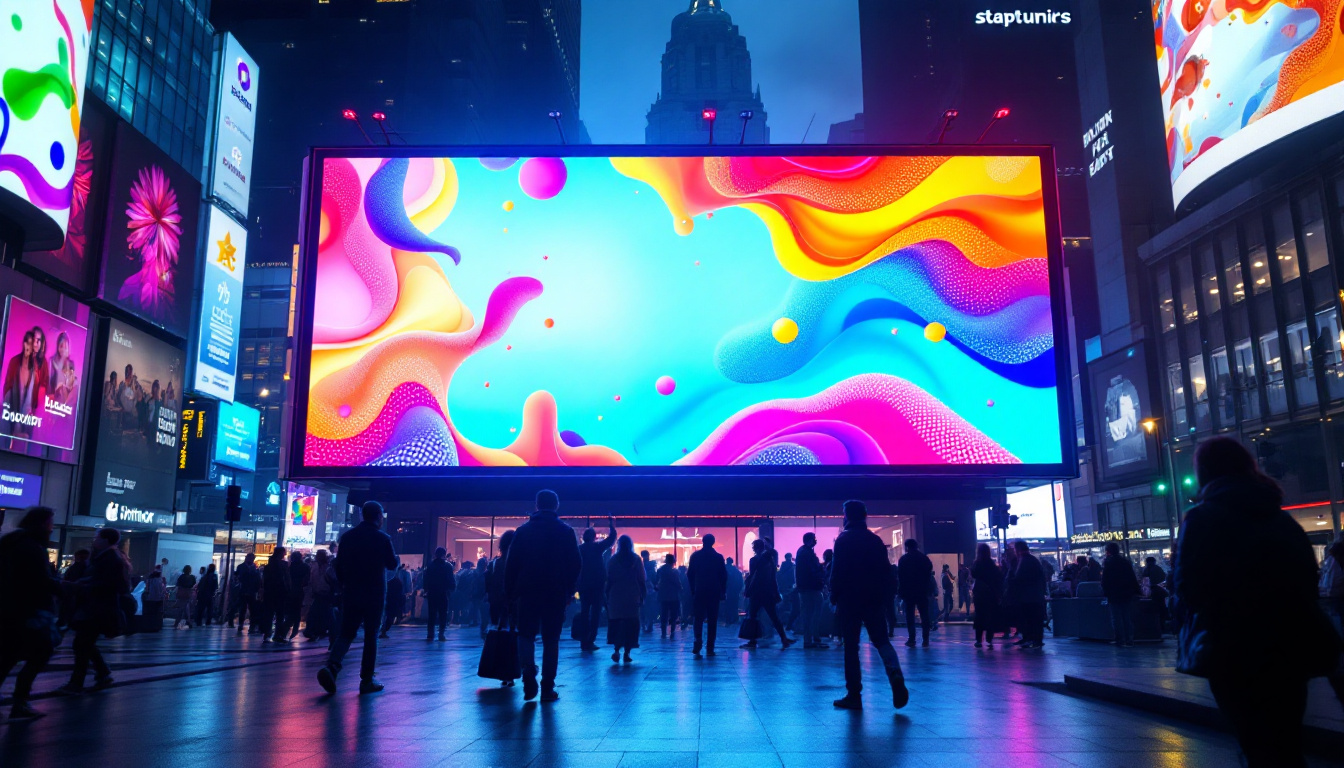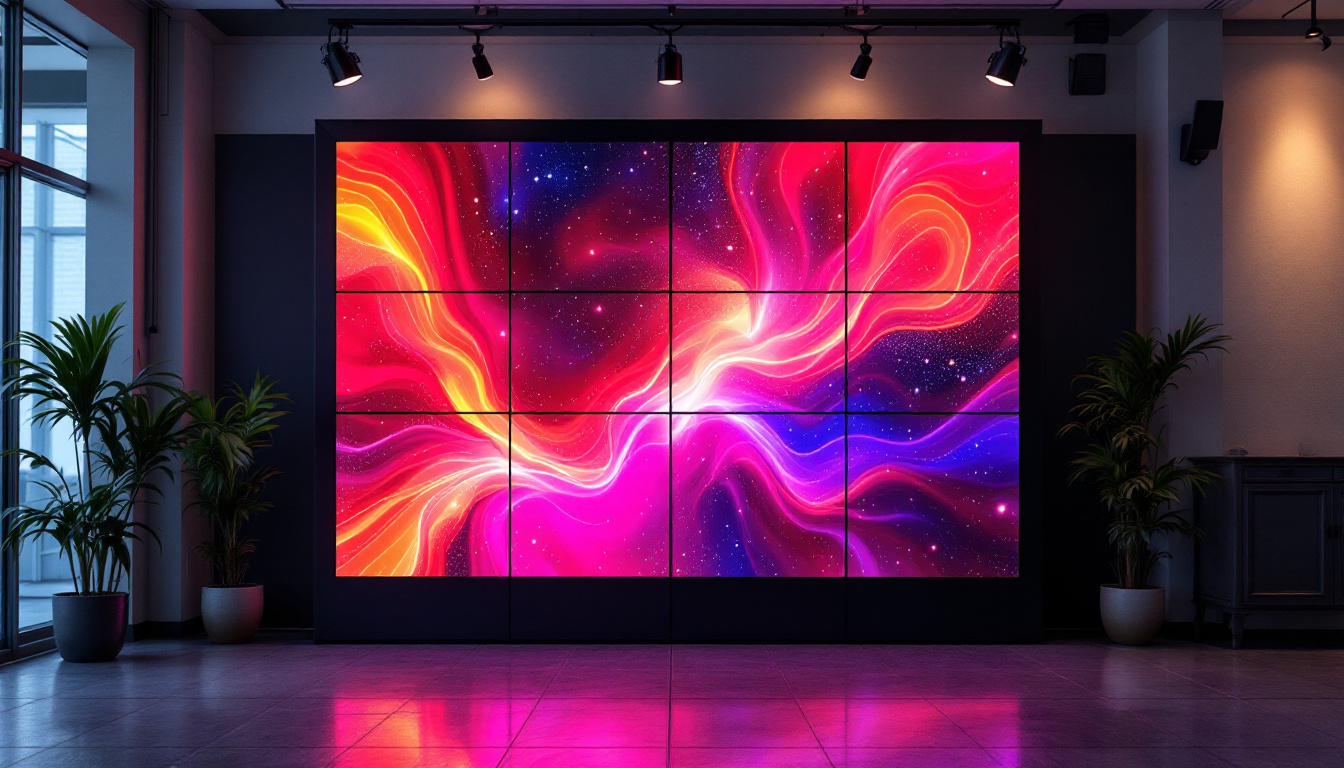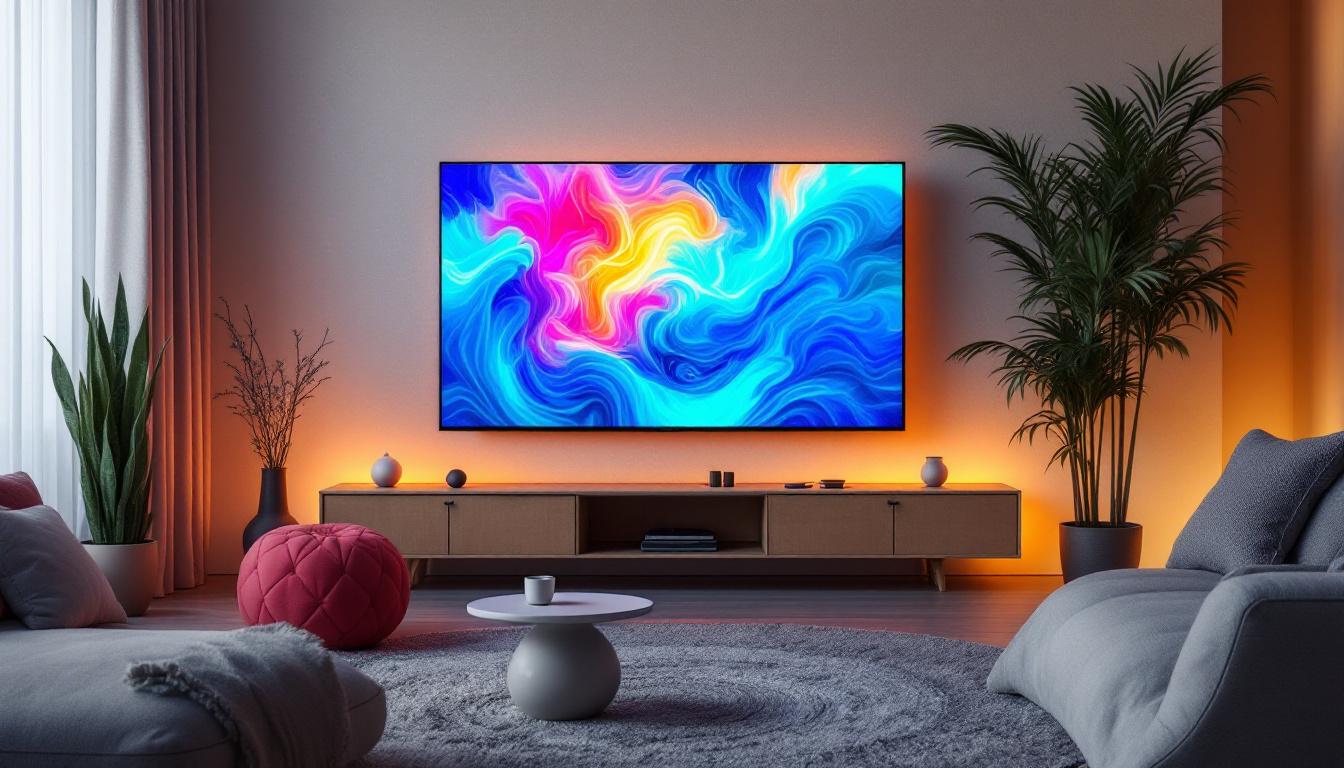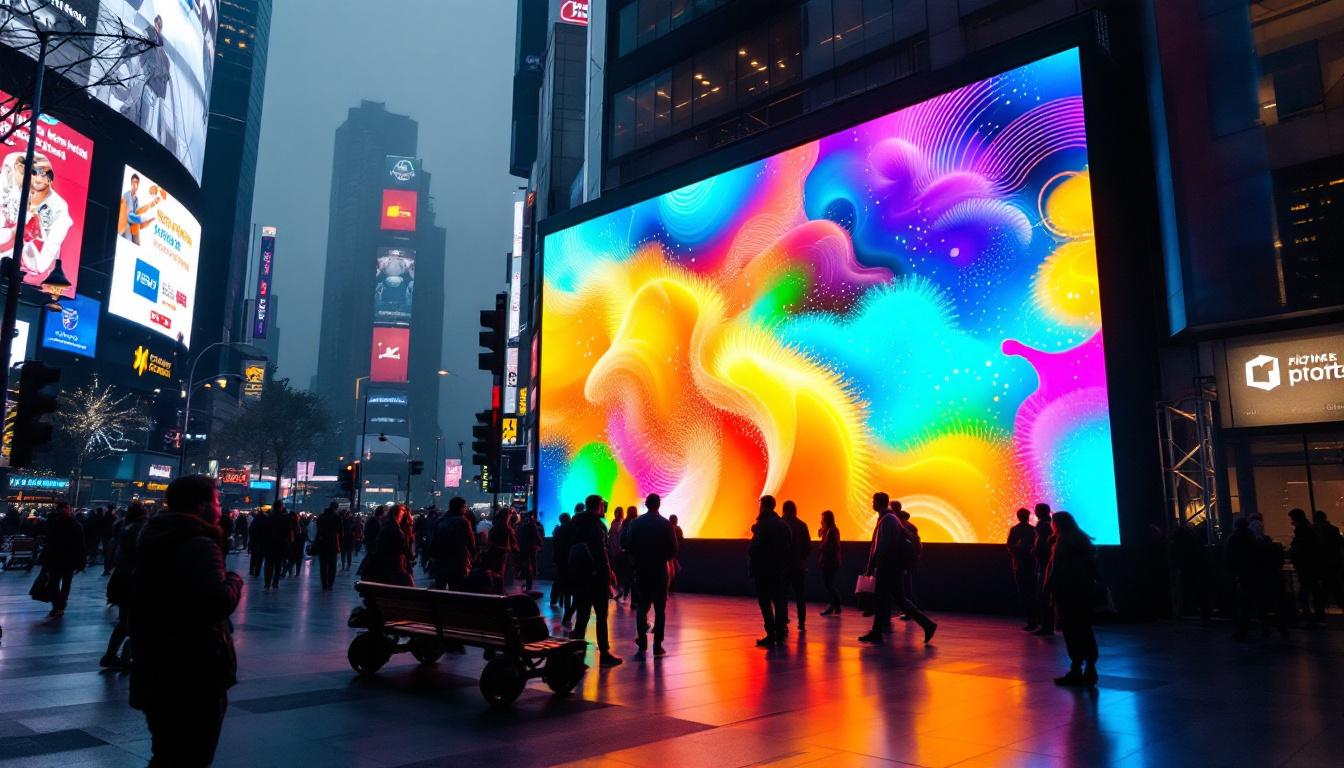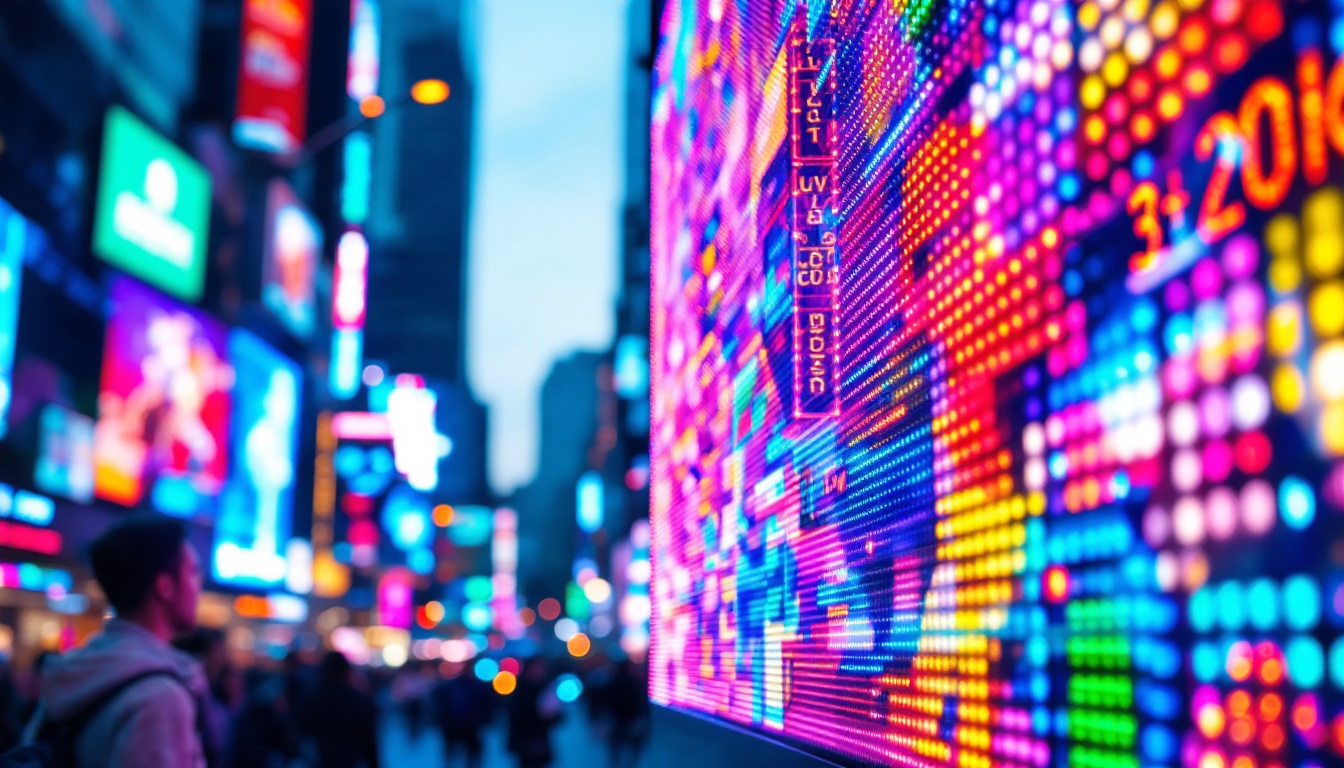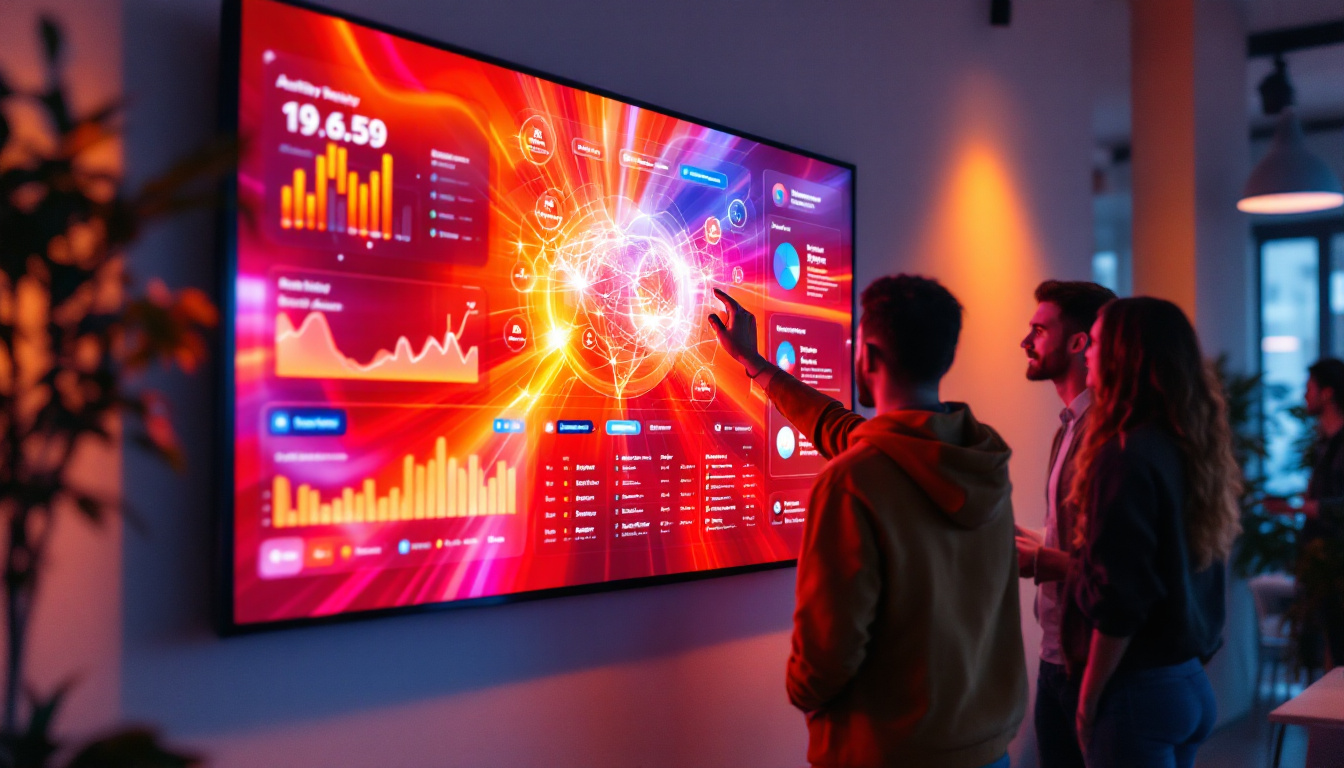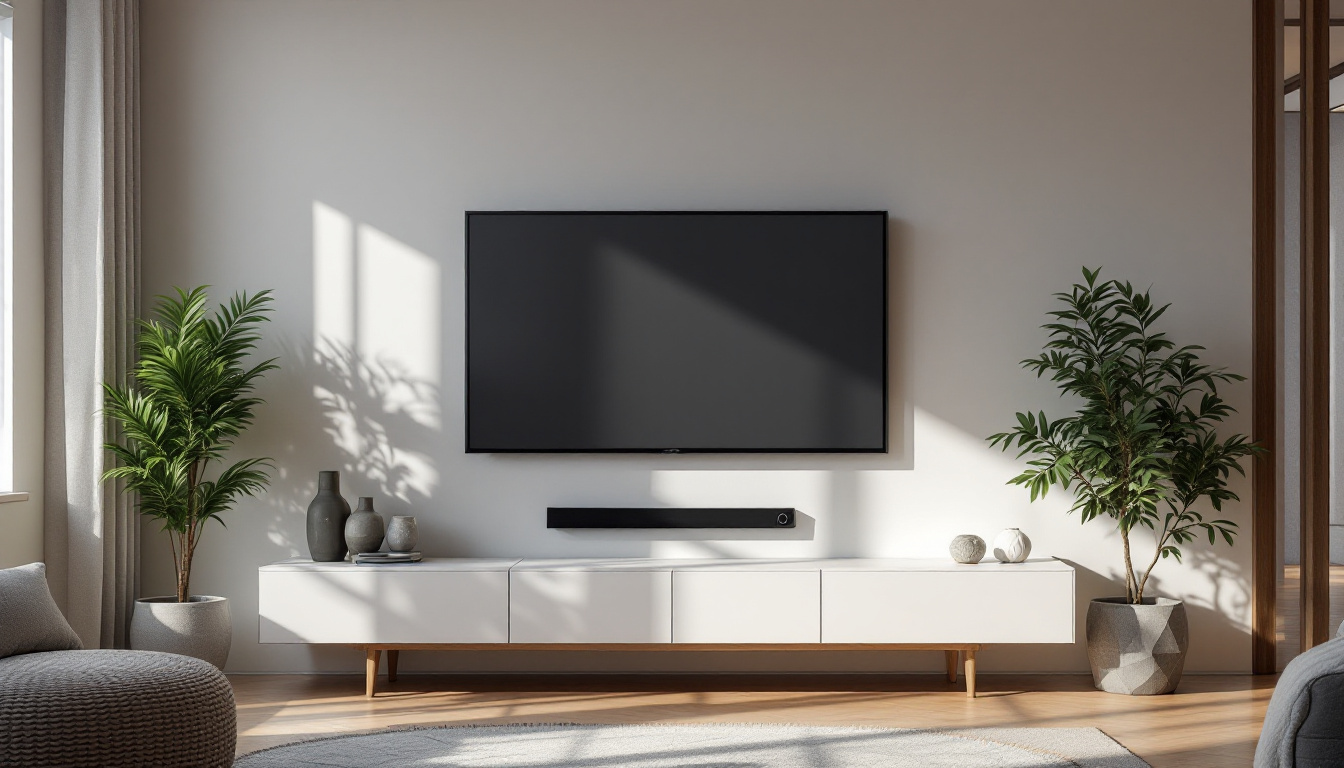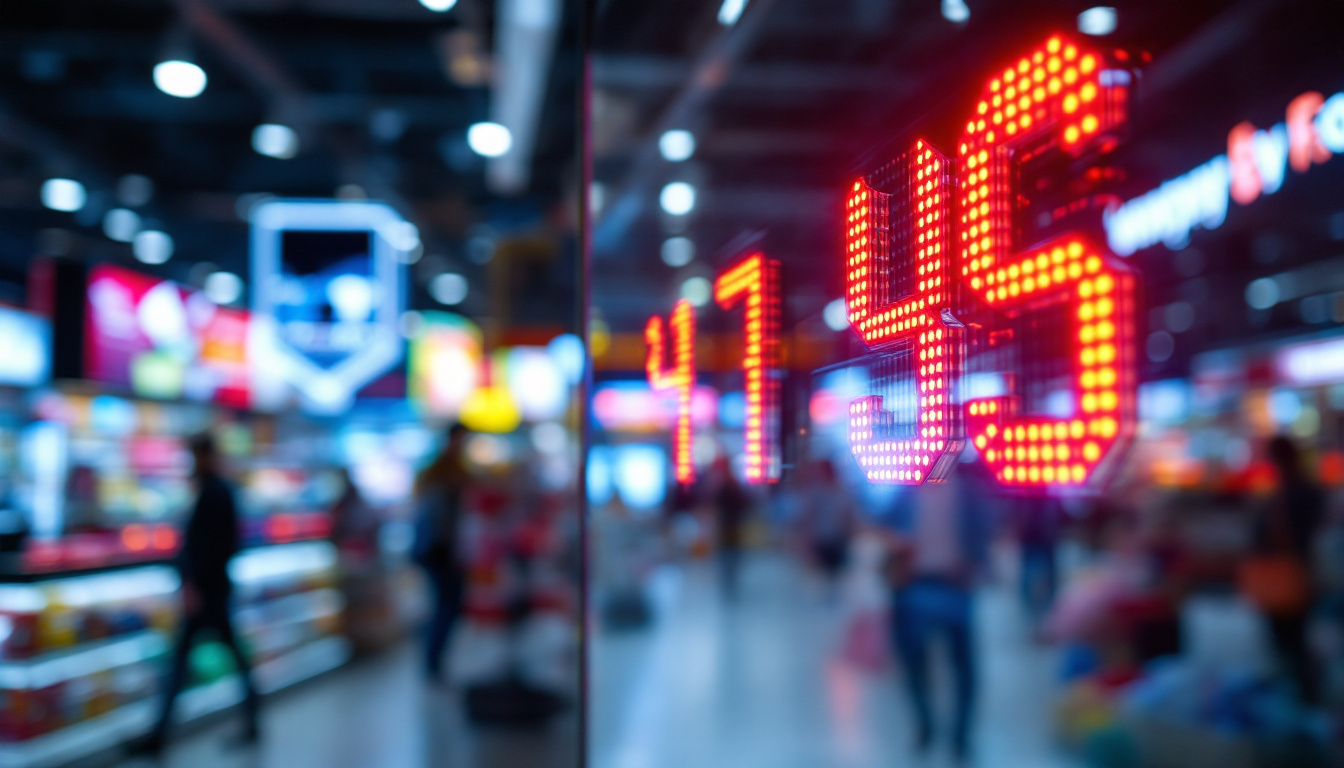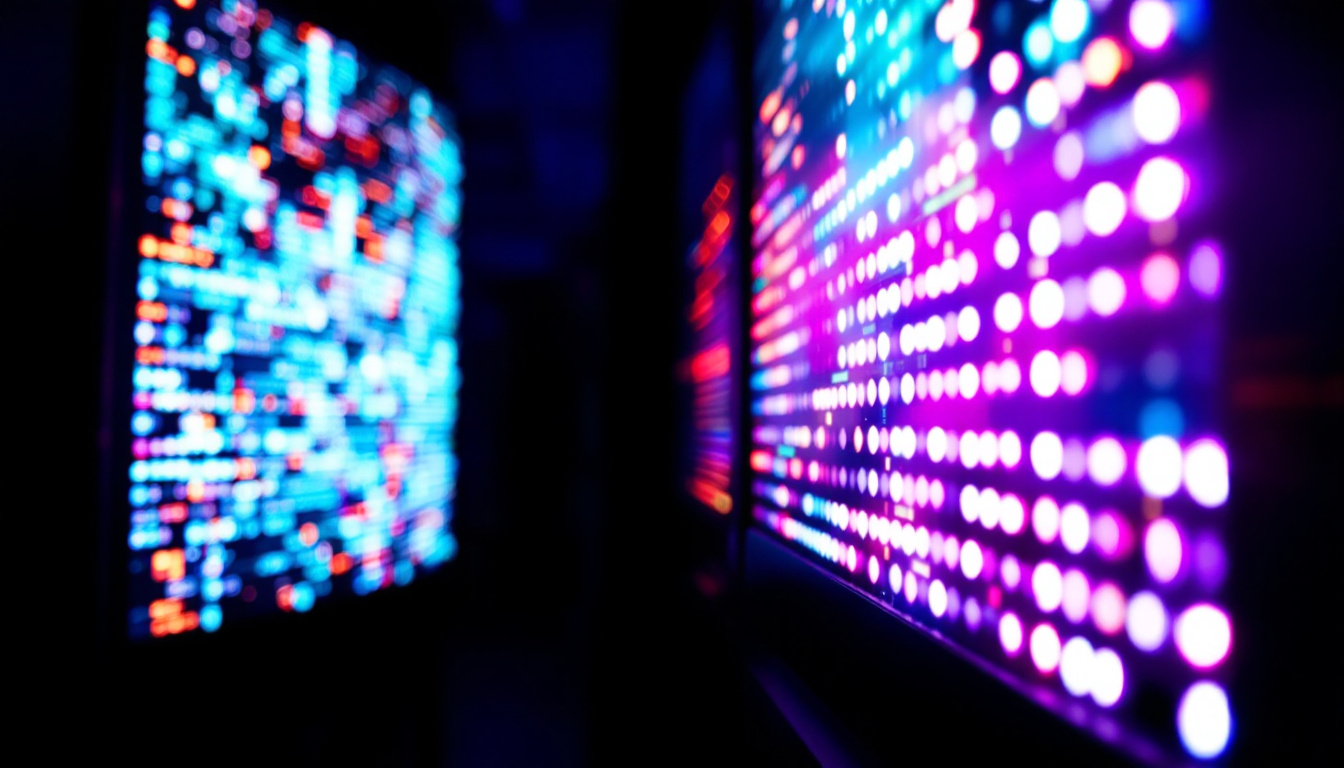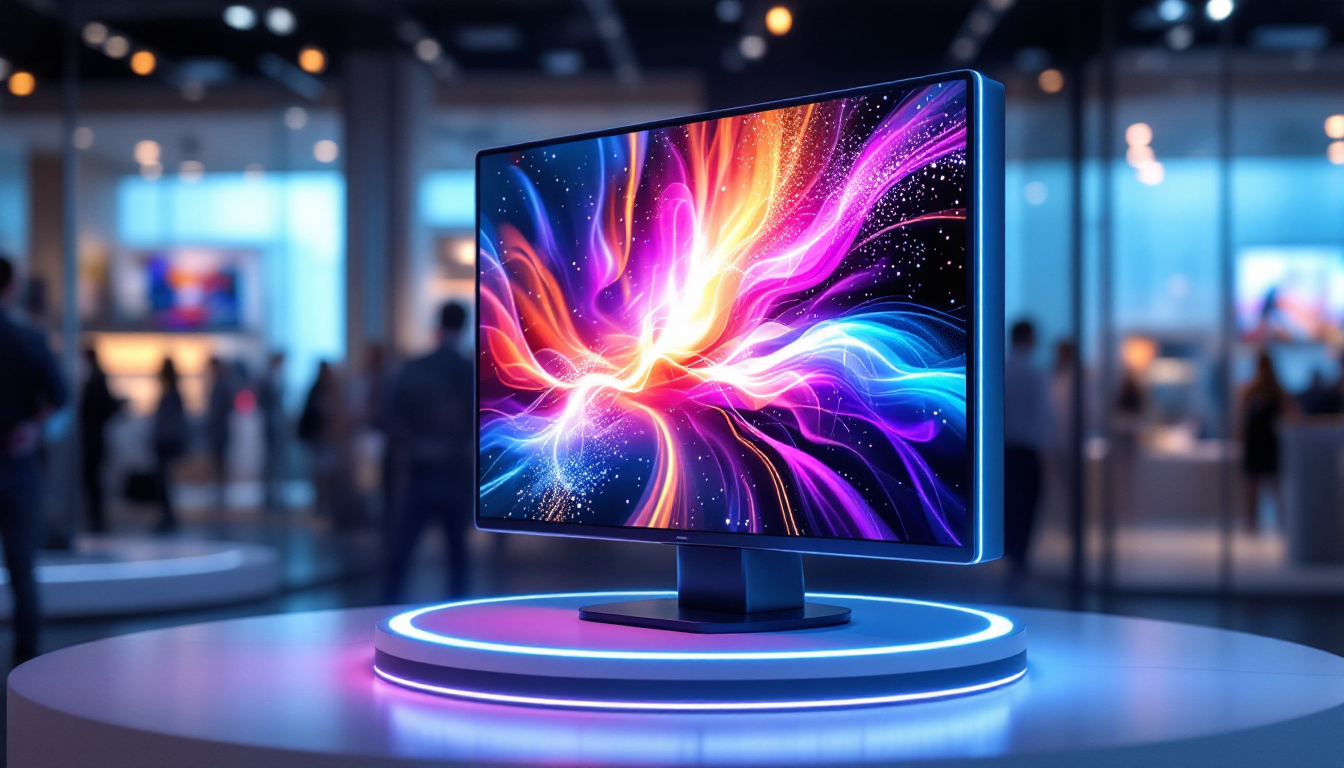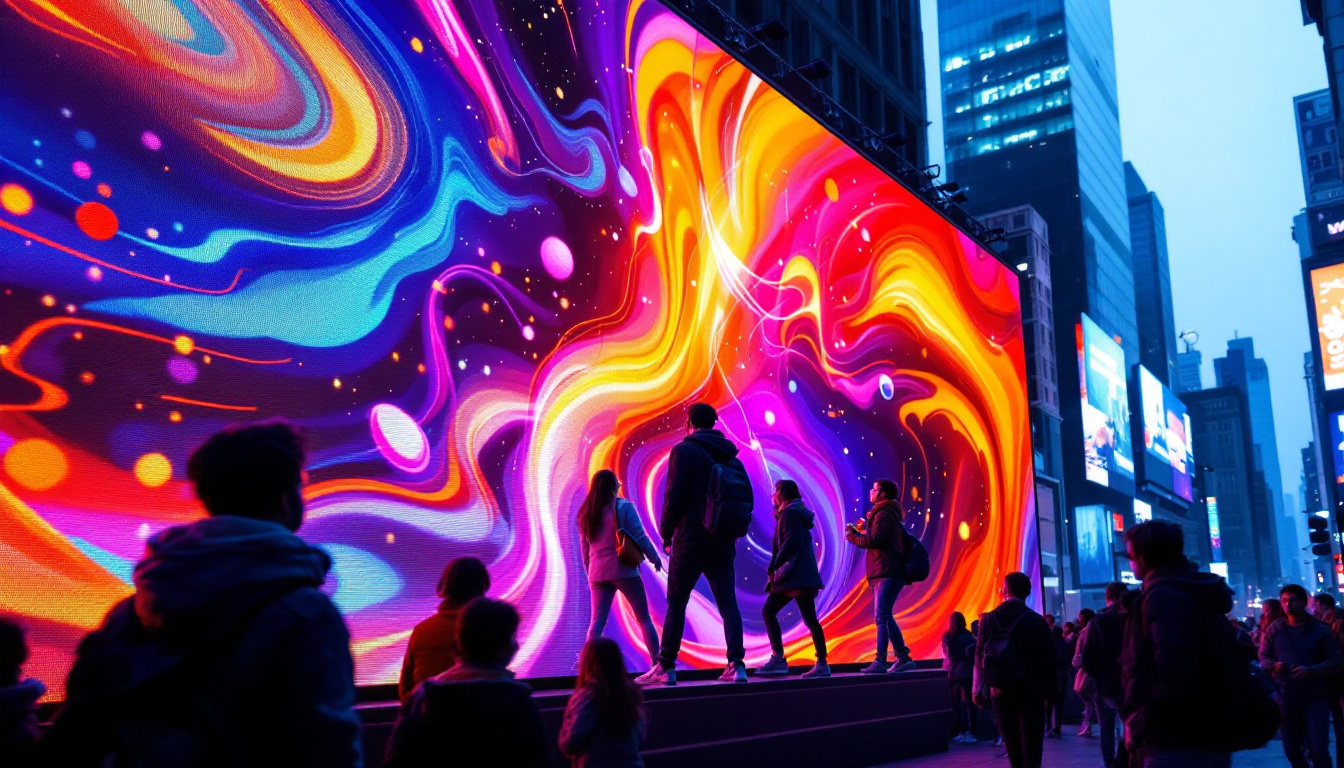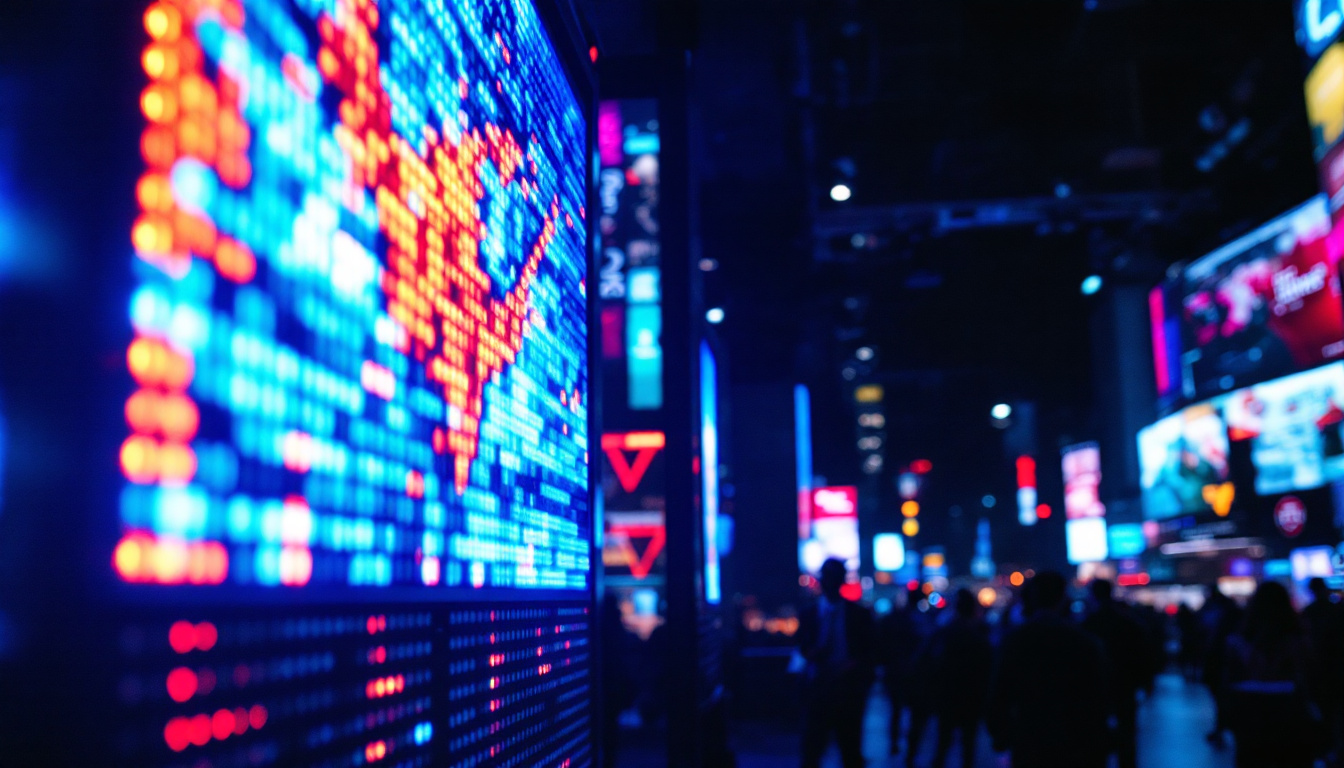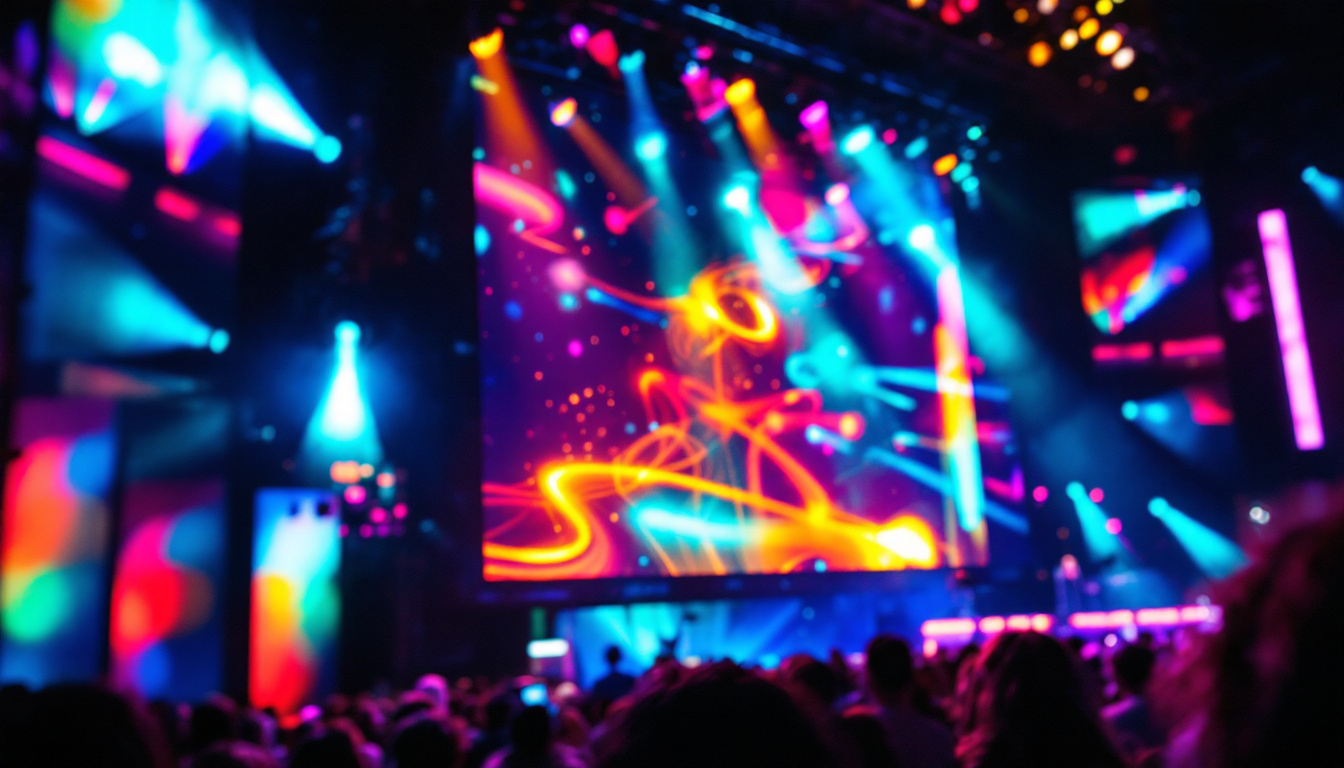In recent years, the evolution of display technology has taken a significant leap forward, with transparent displays emerging as a groundbreaking innovation. These displays not only provide visual information but also allow for interaction with the environment behind them. This article delves into the intricacies of transparent LED displays, exploring their functionality, applications, and the technology that drives them.
What is a Transparent LED Display?
A transparent LED display is a type of screen that combines light-emitting diodes (LEDs) with a transparent substrate, allowing users to see through the display while still viewing images or videos. This unique capability makes them ideal for various applications, ranging from advertising to architectural design. The ability to overlay digital content onto real-world environments opens up a plethora of creative possibilities, enabling businesses and designers to engage audiences in innovative ways.
How Transparent LED Displays Work
The fundamental principle behind transparent LED displays is the use of micro-LED technology. These displays consist of tiny LED modules that can be arranged in a grid-like pattern. When powered, these LEDs emit light, creating images while maintaining transparency. The transparency level can vary depending on the design, typically ranging from 40% to 90%.
To achieve this effect, the transparent display uses a combination of advanced optical technology and innovative materials. The LED modules are often mounted on a clear substrate, such as glass or acrylic, allowing light to pass through while still providing a vibrant visual experience. This design enables the display to blend seamlessly with its surroundings, making it a versatile option for various environments. Furthermore, the integration of sensors and cameras can enhance interactivity, allowing users to engage with the content in real-time, which is particularly appealing in retail and exhibition spaces.
Key Features of Transparent LED Displays
One of the standout features of transparent LED displays is their ability to maintain high visibility while displaying content. This is achieved through high brightness levels and contrast ratios, which ensure that images remain clear and vibrant, even in well-lit environments. The technology also allows for a wide color gamut, enabling businesses to showcase their brand colors and graphics with stunning accuracy.
Additionally, these displays are lightweight and energy-efficient, making them easy to install and operate. Many transparent LED displays are also modular, allowing for flexible sizing and configurations to suit different applications. This adaptability is particularly beneficial for businesses looking to create unique advertising solutions or immersive experiences. For example, a transparent LED display can be used in a storefront window to showcase promotional videos while still allowing passersby to see the products inside, effectively merging digital marketing with physical retail. The potential for creative storytelling through this medium is vast, as it can transform ordinary spaces into dynamic visual experiences that captivate audiences.
Applications of Transparent LED Displays
The versatility of transparent LED displays has led to their adoption across various industries. From retail to transportation, these displays are revolutionizing how information is presented and interacted with.
Retail and Advertising
In the retail sector, transparent LED displays are used to create eye-catching advertisements that engage customers. These displays can be integrated into storefront windows, allowing shoppers to view products behind the screen while also seeing promotional content. This dual functionality not only enhances the shopping experience but also increases brand visibility.
Moreover, transparent displays can be used for dynamic signage in shopping malls, airports, and public transportation hubs. They provide real-time information while maintaining an open and inviting atmosphere, making them an attractive choice for high-traffic areas.
Architectural and Interior Design
Architects and interior designers are increasingly incorporating transparent LED displays into their projects. These displays can be used as decorative elements, enhancing the aesthetic appeal of a space while serving functional purposes. For instance, they can display artwork, information, or even ambient lighting effects, all while allowing natural light to filter through.
Furthermore, transparent displays can be utilized in museums and exhibitions to provide interactive experiences. Visitors can view artifacts behind the display while simultaneously accessing digital information, creating a more engaging and informative environment.
Transportation and Smart Cities
Transparent LED displays are also making their mark in the transportation sector. They can be integrated into bus shelters, train stations, and airports to provide real-time updates on schedules and services. The transparency of these displays ensures that they do not obstruct views, allowing passengers to see their surroundings while staying informed.
In the context of smart cities, transparent displays can play a crucial role in enhancing urban environments. By providing information about local events, public services, and transportation options, these displays can contribute to a more connected and informed community.
Advantages of Transparent LED Displays
Transparent LED displays offer a range of advantages that set them apart from traditional display technologies. These benefits make them an attractive option for various applications.
Enhanced Visibility
One of the primary advantages of transparent LED displays is their enhanced visibility. Unlike conventional screens, which can obscure views, transparent displays allow users to see through them. This feature is particularly beneficial in environments where maintaining an open feel is essential, such as retail spaces and public venues.
Additionally, the high brightness levels of transparent LED displays ensure that content remains visible even in bright sunlight. This capability is crucial for outdoor applications, where traditional displays may struggle to compete with ambient light.
Energy Efficiency
Transparent LED displays are designed with energy efficiency in mind. The use of micro-LED technology allows for lower power consumption compared to traditional display technologies. This not only reduces operational costs but also minimizes the environmental impact, making them a sustainable choice for businesses and organizations.
Furthermore, the lightweight nature of these displays simplifies installation and reduces the structural requirements for mounting, further contributing to their overall efficiency.
Customization and Flexibility
Another significant advantage of transparent LED displays is their customization potential. These displays can be tailored to fit various sizes and shapes, allowing for creative applications that align with specific branding or design requirements. This flexibility enables businesses to create unique visual experiences that resonate with their target audience.
Moreover, the modular design of many transparent LED displays allows for easy expansion or reconfiguration. This adaptability is particularly valuable for businesses that may need to change their display setups frequently.
Challenges and Considerations
While transparent LED displays offer numerous benefits, there are also challenges and considerations that potential users should be aware of. Understanding these factors is essential for making informed decisions regarding their implementation.
Cost and Investment
One of the primary challenges associated with transparent LED displays is the initial cost. These displays can be more expensive than traditional display technologies due to their advanced components and manufacturing processes. Businesses must weigh the potential return on investment against the upfront costs to determine if transparent displays align with their budget and goals.
However, as technology continues to evolve and production methods improve, the costs associated with transparent LED displays are expected to decrease over time, making them more accessible to a broader range of users.
Content Management
Effective content management is crucial for maximizing the impact of transparent LED displays. Businesses must invest in software solutions that allow for seamless content updates and scheduling. This requirement can add to the overall complexity of managing a transparent display system, particularly for organizations without dedicated IT resources.
Additionally, the content displayed must be carefully designed to ensure visibility and clarity. Given the transparency of the display, images and text must be crafted to stand out against the background, which may require specialized design skills.
Environmental Factors
Transparent LED displays are often used in outdoor settings, which exposes them to various environmental factors. Weather conditions, such as rain or extreme temperatures, can impact the performance and longevity of the display. It is essential for users to consider protective measures and maintenance protocols to ensure the durability of their investment.
The Future of Transparent LED Displays
The future of transparent LED displays looks promising, with ongoing advancements in technology and increasing adoption across various sectors. As the demand for innovative display solutions continues to grow, manufacturers are likely to invest in research and development to enhance the capabilities of transparent displays.
Technological Advancements
Future developments in transparent LED technology may focus on improving resolution, color accuracy, and energy efficiency. As micro-LED technology matures, it is expected that transparent displays will become even more versatile and capable of delivering high-quality visuals in a wider range of applications.
Additionally, advancements in software and content management systems will likely make it easier for businesses to create and manage dynamic content for their transparent displays, further enhancing their effectiveness as marketing and communication tools.
Broader Adoption Across Industries
As awareness of the benefits of transparent LED displays continues to grow, more industries are likely to explore their potential. From healthcare to education, organizations will find innovative ways to leverage transparent displays to enhance communication, engagement, and user experiences.
Moreover, as urban environments evolve into smart cities, the integration of transparent displays into public spaces will become increasingly common. These displays will serve as vital information hubs, connecting communities and providing real-time updates on local events, services, and transportation options.
Conclusion
Transparent LED displays represent a significant advancement in display technology, offering unique benefits that cater to a variety of applications. Their ability to combine visibility with interactivity makes them an attractive option for businesses and organizations looking to enhance communication and engagement.
While challenges such as cost and content management exist, the advantages of transparent displays, including energy efficiency, customization, and enhanced visibility, make them a compelling choice for the future. As technology continues to evolve, transparent LED displays are poised to play a crucial role in shaping the way information is presented and experienced in our increasingly digital world.
Discover the Future of LED Displays with LumenMatrix
Ready to elevate your visual communication and create an unforgettable experience for your audience? LumenMatrix is at the forefront of LED display innovation, offering a wide array of solutions from Indoor and Outdoor LED Wall Displays to specialized options like Vehicle, Sports, and Floor LED Displays. Our mission is to transform your engagement with high-impact, custom LED displays, including the cutting-edge Transparent LED Display. Check out LumenMatrix LED Display Solutions today and step into the future of digital storytelling.

